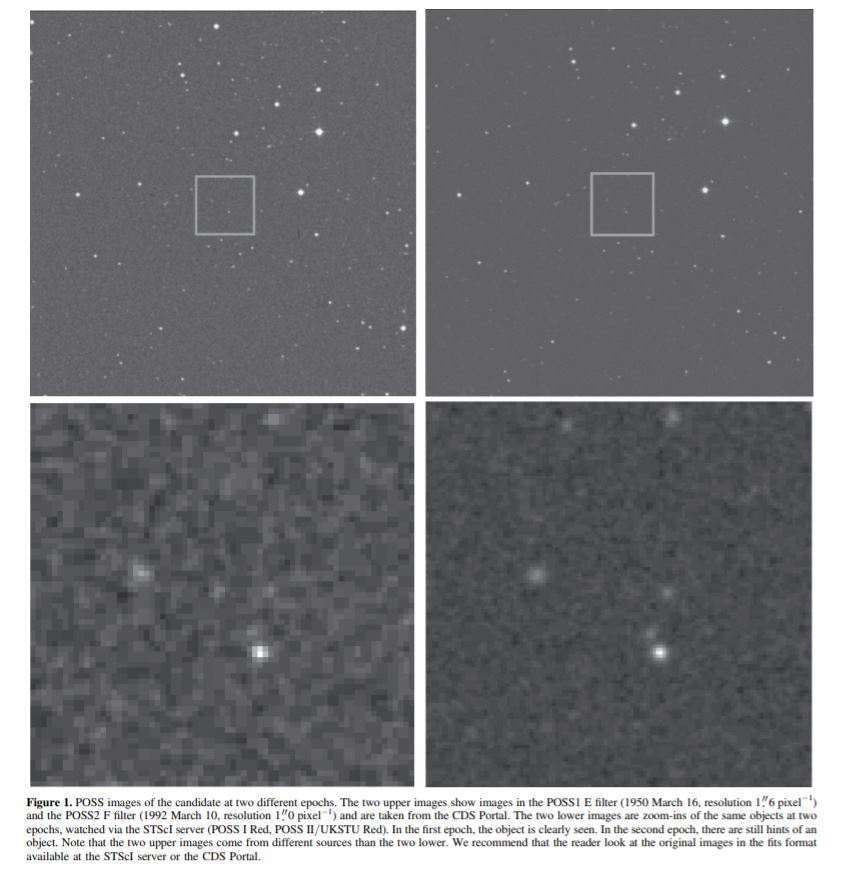Villarroel, Imaz, and Bergstedt 2016 had an interesting theory that they actually tested. Regardless of your opinion of the theory, you have to respect them for actually performing their search, which is something that too few SETI papers do.
They wanted to look and see if any objects have disappeared from the sky and slipped under the radar. The methodology was pretty straightforward: they looked at the US Naval Observatory sky catalog and found objects with low proper motions. Then they created four parent catalogs (with differing criteria like “needs >4 detections” or “needs to be < 18 mag”). They look for and exclude corresponding objects (by position) in SDSS data, which cuts out a lot of their objects. Many of the remaining objects actually are still present in the SDSS data but were just missed by the pipeline – they looked at these images by eye for this reason. Examining by eye also allowed the removal of any artifacts that were causing the difference in detection. After this cut, 148 objects remained. Many of those don’t even have a visible object in the USNO catalog, suggesting that there were errors in their proper motions / positions or were just noise from the beginning. After all of this, only a single candidate remains, shown below.
I personally am not convinced about the existence of this object in the first place. I believe that the authors are talking about the spot in the middle of the “triangle” of objects almost directly in the center of the image… but honestly, I could easily see it just being noise. I don’t know that I would suggest that it was “clearly seen”.
So, now that I’ve gone through the paper itself, why did the authors think that looking for a disappearing object would be an interesting or sensible thing to do, and why might it relate to SETI? The building of a Dyson sphere was suggested as a way to make a star disappear, but I don’t believe that the authors’ timescale (60-70 years) is feasible by even Dyson’s original calculation based on the energy needed to construct it vs. the energy output of the central star. Mostly, a disappearing star or galaxy would be something that we would not expect nature to do, so it’s either interesting SETI or interesting astrophysics (high risk, high reward, high turns-all-of-astro-on-its-head factor). If the action causing the “nature-plus” effect is ETI but not intentional communication, then the philosophy behind this search is the equivalent of searching for the most “obviously artificial” technosignatures possible, which is one way to approach the haystack.
Personally, I like the idea of this search, following Paul Davies suggestion in his lunar artifacts paper – it’s quite simple to make sure no objects have disappeared from the sky in the last few decades. Like, they probably haven’t, but it’s a good thing to check on.
Final Point: The discovery of a disappearing galaxy would be terrifying, whether ETI or not. I honestly don’t know how I would react to that. Probably with the same or greater instinctual fear as I would have towards beings who think it’s fun to send messages in gravitational waves. Maybe some curiosity, but curiosity requires a hope of understanding. A disappearing galaxy would require power/energy so far beyond our comprehension that the result is basically god-like (one is reminded of Q from Star Trek, although he mostly just spent his time trolling Picard, so perhaps that’s a bad example). At any rate, I’m kind of glad that they didn’t find any of those.

